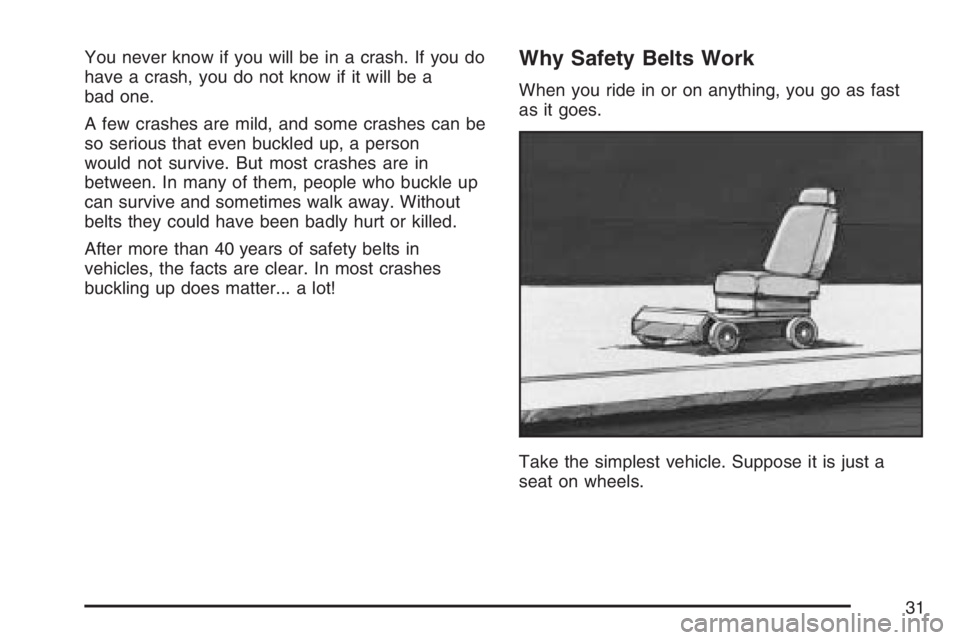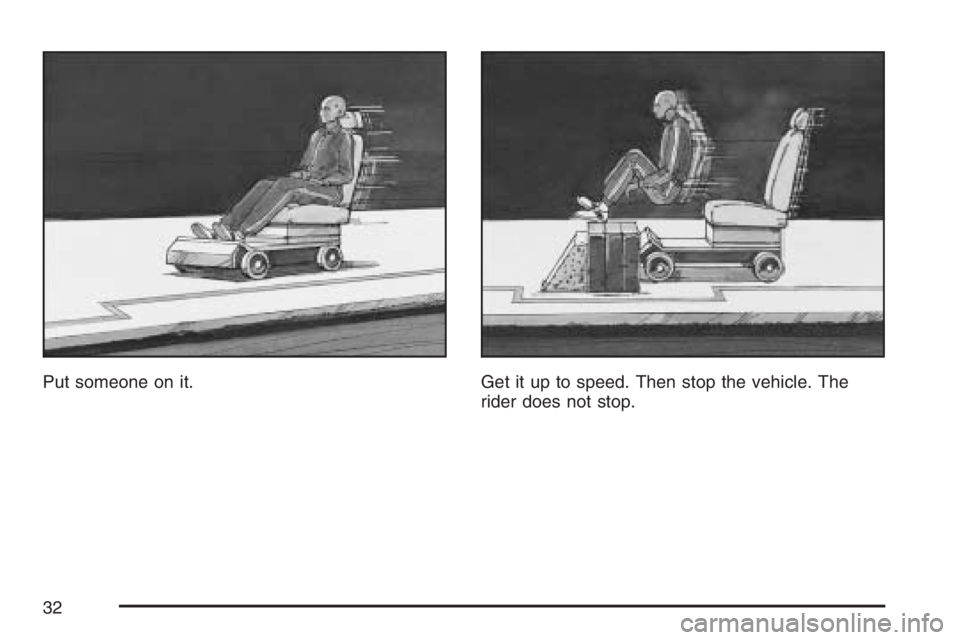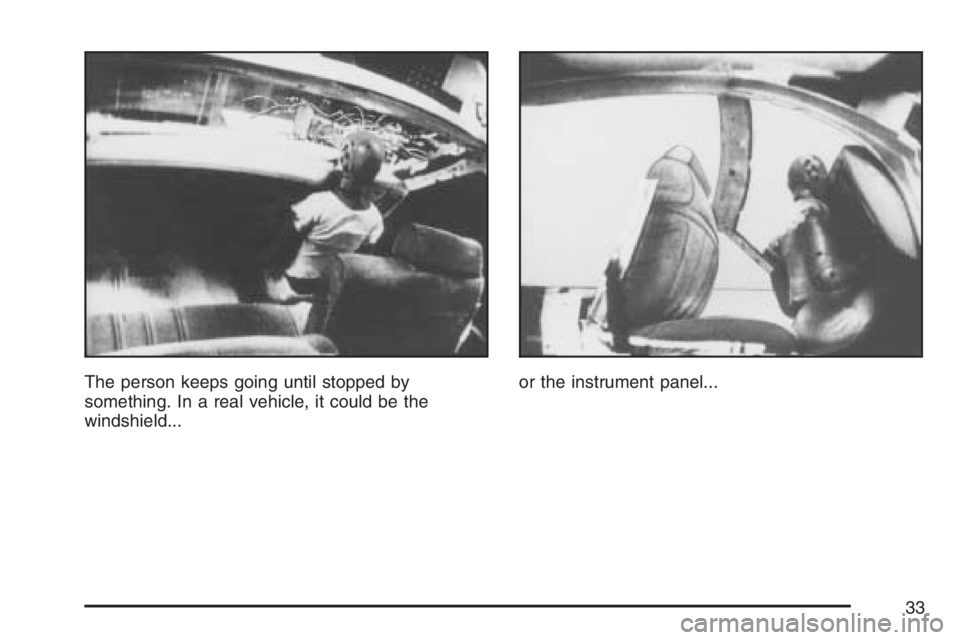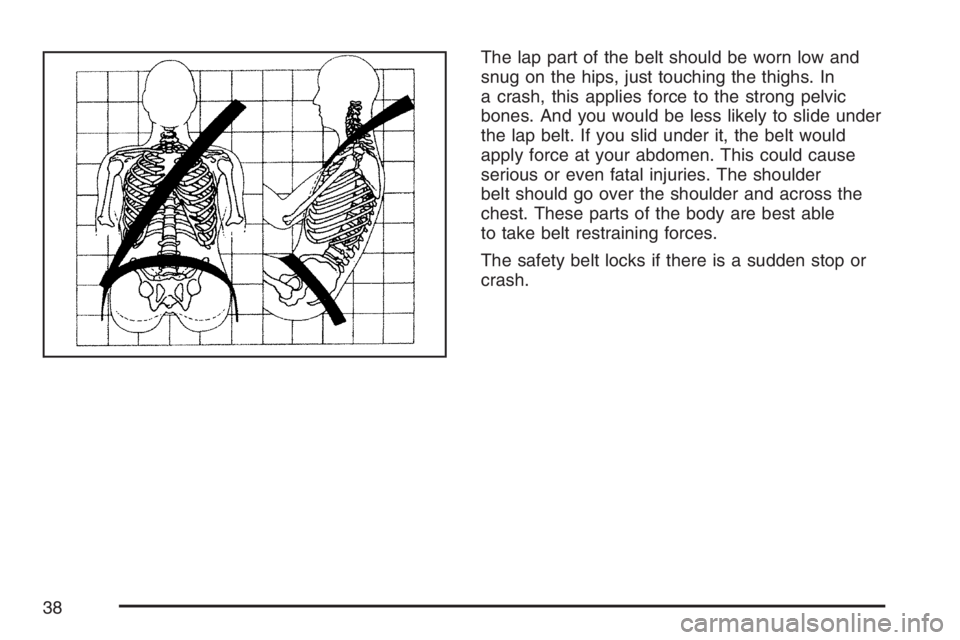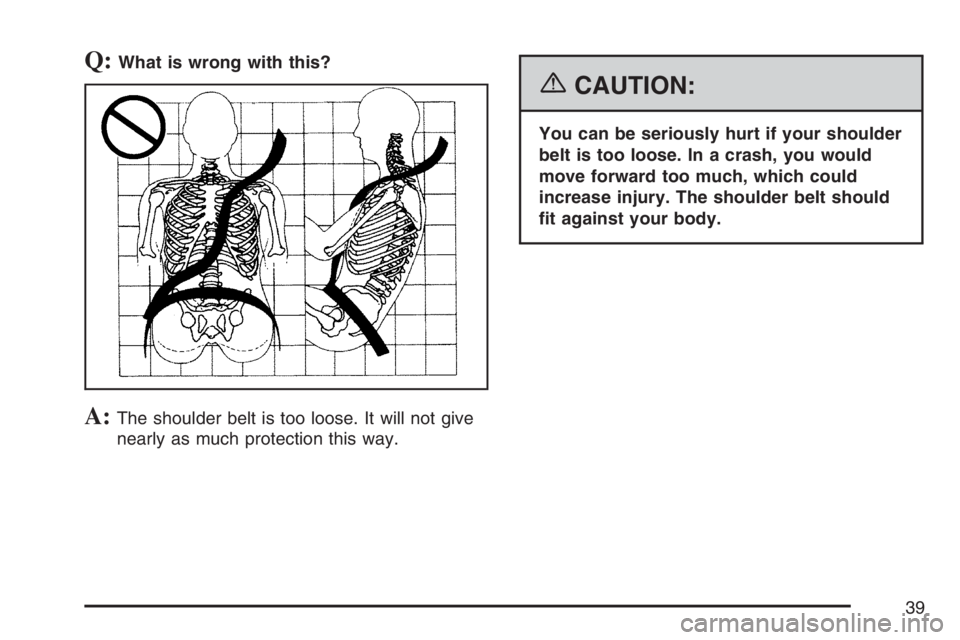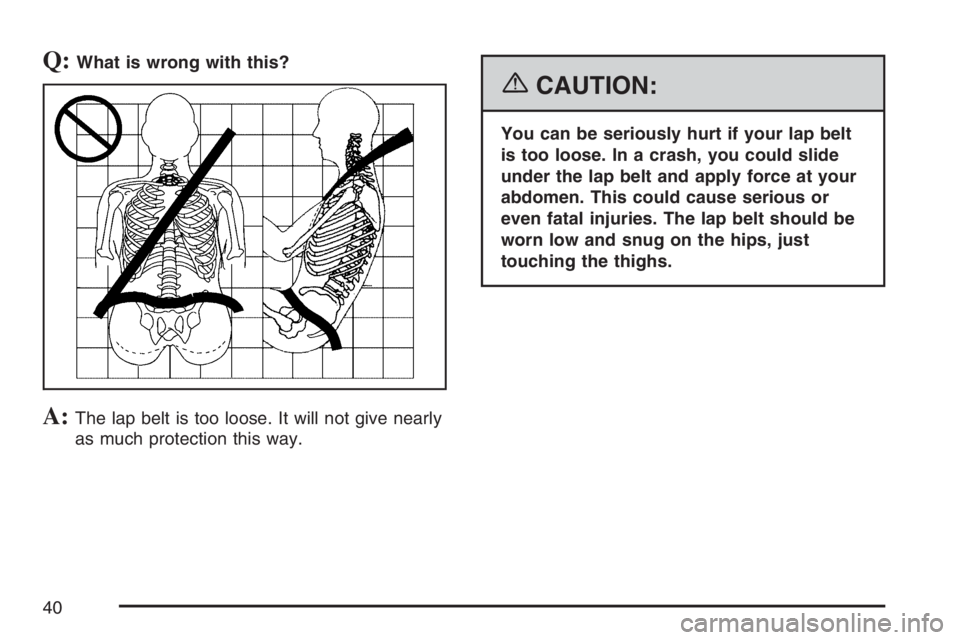BUICK RANDEZVOUS 2007 Owner's Guide
RANDEZVOUS 2007
BUICK
BUICK
https://www.carmanualsonline.info/img/43/35366/w960_35366-0.png
BUICK RANDEZVOUS 2007 Owner's Guide
Trending: park assist, reset, oil level, oil capacity, phone, wheel, low oil pressure
Page 31 of 528
You never know if you will be in a crash. If you do
have a crash, you do not know if it will be a
bad one.
A few crashes are mild, and some crashes can be
so serious that even buckled up, a person
would not survive. But most crashes are in
between. In many of them, people who buckle up
can survive and sometimes walk away. Without
belts they could have been badly hurt or killed.
After more than 40 years of safety belts in
vehicles, the facts are clear. In most crashes
buckling up does matter... a lot!Why Safety Belts Work
When you ride in or on anything, you go as fast
as it goes.
Take the simplest vehicle. Suppose it is just a
seat on wheels.
31
Page 32 of 528
Put someone on it. Get it up to speed. Then stop the vehicle. The
rider does not stop.
32
Page 33 of 528
The person keeps going until stopped by
something. In a real vehicle, it could be the
windshield...or the instrument panel...
33
Page 34 of 528

or the safety belts!
With safety belts, you slow down as the vehicle
does. You get more time to stop. You stop
over more distance, and your strongest bones
take the forces. That is why safety belts
make such good sense.
Questions and Answers About
Safety Belts
Q:Will I be trapped in the vehicle after an
accident if I am wearing a safety belt?
A:Youcouldbe — whether you are wearing a
safety belt or not. But you can unbuckle a
safety belt, even if you are upside down. And
your chance of being conscious during and
after an accident, so youcanunbuckle and get
out, ismuchgreater if you are belted.
Q:If my vehicle has airbags, why should I
have to wear safety belts?
A:Airbags are in many vehicles today and will be
in most of them in the future. But they are
supplemental systems only; so they workwith
safety belts — not instead of them. Every
airbag system ever offered for sale has
required the use of safety belts. Even if you
are in a vehicle that has airbags, you still have
to buckle up to get the most protection. That
is true not only in frontal collisions, but
especially in side and other collisions.
34
Page 35 of 528
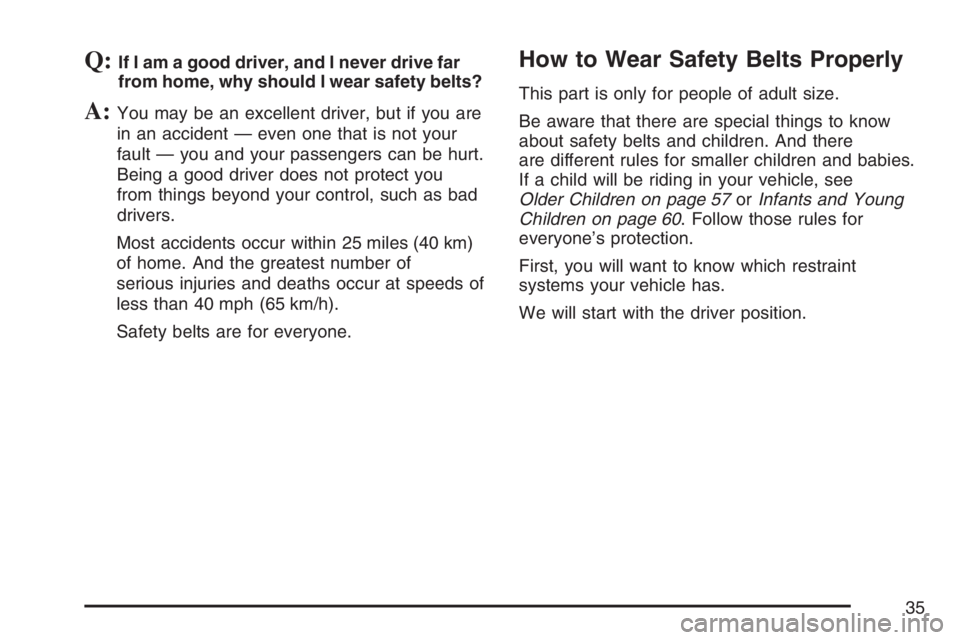
Q:If I am a good driver, and I never drive far
from home, why should I wear safety belts?
A:You may be an excellent driver, but if you are
in an accident — even one that is not your
fault — you and your passengers can be hurt.
Being a good driver does not protect you
from things beyond your control, such as bad
drivers.
Most accidents occur within 25 miles (40 km)
of home. And the greatest number of
serious injuries and deaths occur at speeds of
less than 40 mph (65 km/h).
Safety belts are for everyone.
How to Wear Safety Belts Properly
This part is only for people of adult size.
Be aware that there are special things to know
about safety belts and children. And there
are different rules for smaller children and babies.
If a child will be riding in your vehicle, see
Older Children on page 57orInfants and Young
Children on page 60. Follow those rules for
everyone’s protection.
First, you will want to know which restraint
systems your vehicle has.
We will start with the driver position.
35
Page 36 of 528
Driver Position
Lap-Shoulder Belt
The driver has a lap-shoulder belt. Here is how to
wear it properly.
1. Close and lock the door.
2. Adjust the seat so you can sit up straight. To
see how, see “Seats” in the Index.
3. Pick up the latch plate and pull the belt across
you. Do not let it get twisted.
The lap-shoulder belt may lock if you pull the
belt across you very quickly. If this happens,
let the belt go back slightly to unlock it.
Then pull the belt across you more slowly.
36
Page 37 of 528
4. Push the latch plate into the buckle until it
clicks.
If the belt stops before it reaches the buckle,
tilt the latch plate and keep pulling until
you can buckle it.
Pull up on the latch plate to make sure it is
secure. If the belt is not long enough,
seeSafety Belt Extender on page 56.
Make sure the release button on the buckle is
positioned so you would be able to unbuckle
the safety belt quickly if you ever had to.5. Move the shoulder belt height adjuster to the
height that is right for you. Improper shoulder
belt height adjustment could reduce the
effectiveness of the safety belt in a crash. See
Shoulder Belt Height Adjustment on page 45.
6. To make the lap part tight, pull up on the
shoulder belt.
It may be necessary to pull stitching on the
safety belt through the latch plate to fully
tighten the lap belt on smaller occupants.
37
Page 38 of 528
The lap part of the belt should be worn low and
snug on the hips, just touching the thighs. In
a crash, this applies force to the strong pelvic
bones. And you would be less likely to slide under
the lap belt. If you slid under it, the belt would
apply force at your abdomen. This could cause
serious or even fatal injuries. The shoulder
belt should go over the shoulder and across the
chest. These parts of the body are best able
to take belt restraining forces.
The safety belt locks if there is a sudden stop or
crash.
38
Page 39 of 528
Q:What is wrong with this?
A:The shoulder belt is too loose. It will not give
nearly as much protection this way.
{CAUTION:
You can be seriously hurt if your shoulder
belt is too loose. In a crash, you would
move forward too much, which could
increase injury. The shoulder belt should
�t against your body.
39
Page 40 of 528
Q:What is wrong with this?
A:The lap belt is too loose. It will not give nearly
as much protection this way.
{CAUTION:
You can be seriously hurt if your lap belt
is too loose. In a crash, you could slide
under the lap belt and apply force at your
abdomen. This could cause serious or
even fatal injuries. The lap belt should be
worn low and snug on the hips, just
touching the thighs.
40
Trending: fuel pump, clutch, manual transmission, coolant level, service schedule, key battery, display
